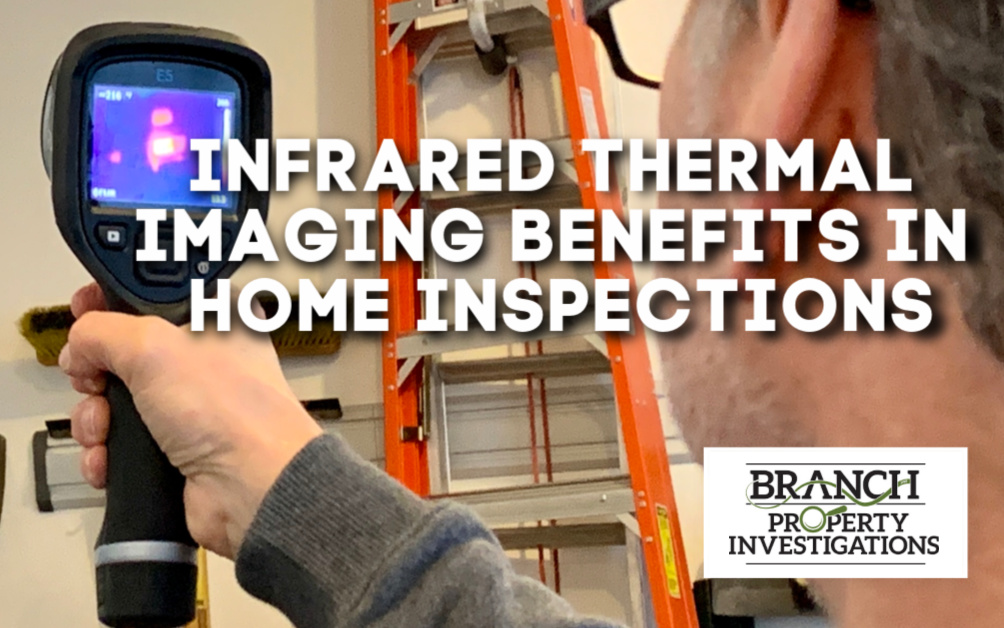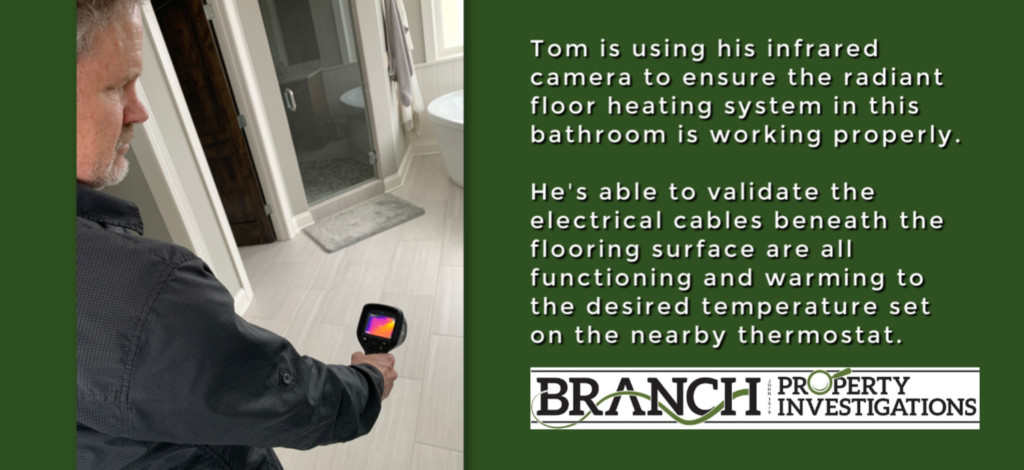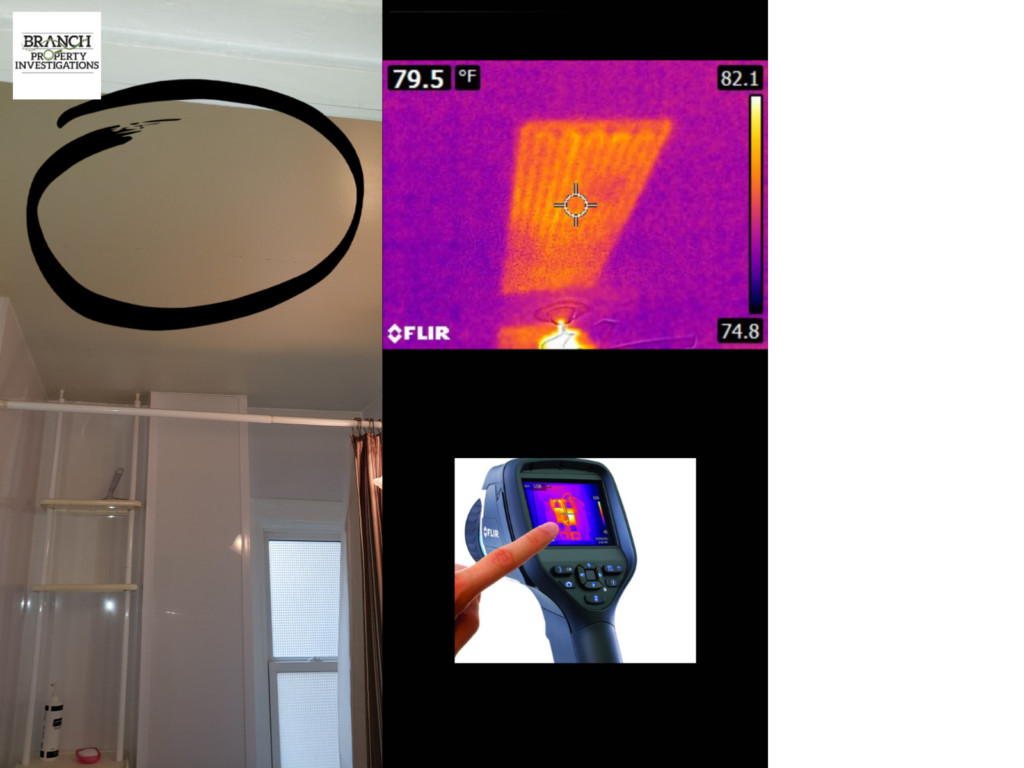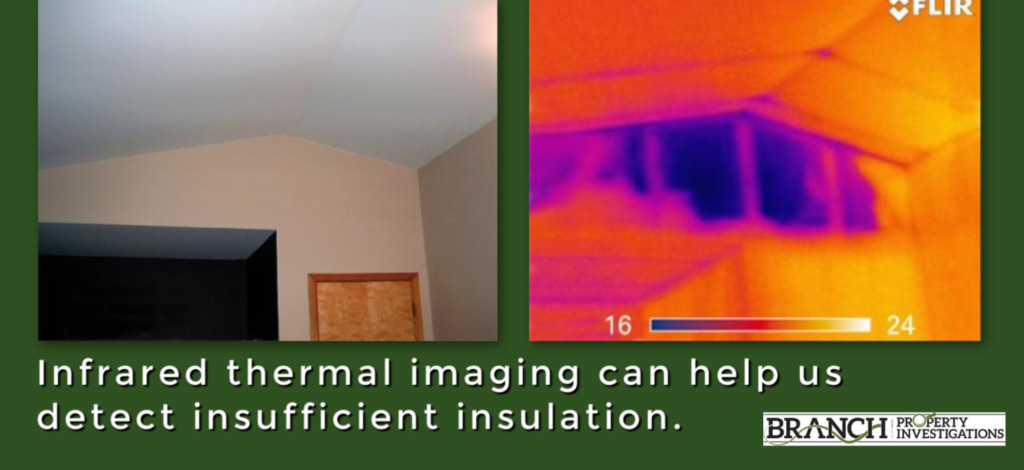Infrared thermal imaging allows unseen problems to be discovered during a home inspection. We are trained to identify problems and areas for potential problems, but we can only see so much with our eyes alone. An infrared camera can reveal a great deal more about a property and may prove extremely advantageous for home buyers! Consider adding it to your inspection so you can have enhanced information about the property.
What is an Infrared Thermal Imaging Camera?
What Can Infrared Thermal Imaging Reveal?
Infrared can reveal a lot of hidden issues in a home. Defects may be related to moisture intrusion, heating and cooling issues, and missing insulation concerns.
Infrared Imaging Can Reveal Moisture
Moisture intrusion can be extremely obvious or very subtle. When subtle, infrared and other instruments may be necessary to locate the moisture and identify the root cause.
For instance, roof and chimney leaks can often be seen if they are large enough. However, relatively new leaks may be more difficult to see. Infrared helps us identify leaks because water holds onto its thermal energy longer than other materials.
Beware: Moisture Leads to Mold
People ask if we can see mold behind a wall with our infrared camera. The answer is no. But thermal imaging does show temperature differentials in an area. This is important because if we see areas that are significantly cooler than others behind a wall, it may indicate the presence of moisture. If we find those areas, we use moisture measuring instruments to confirm there truly is moisture present. And moisture, of course, leads to mold growth.
You may suspect hidden mold if the dwelling smells musty but you cannot see the source. Additionally, if you know there has been water damage or residents are reporting health problems, mold may very well be the culprit. Mold may be hidden in places such as the backside of drywall, wallpaper, or paneling, the top-side of ceiling tiles, or the underside of carpets and pads, etc. Infrared may detect if there is currently hidden moisture in an area creating ideal mold-growth conditions. A typical home inspection is non-invasive so infrared imaging is another tool to extract additional information about the property.
Infrared Imaging and Heat Sources
An infrared camera comes in handy when validating heat sources are working properly.
We took the photo below at a recent condo inspection. Our inspector could not locate any heat registers in the room. Thankfully he could rely on his infrared camera to further investigate and he discovered a ceiling heat source that operated much like in-floor heating.
Infrared Imaging and Insulation Defects
Infrared thermal images can reveal insulation and air leakage problems in a home without invasive testing. This is a great way to find missing insulation and air leaks through the structure. We can use our infrared camera to locate the source of these air leaks, often around window frames or in the attic. It’s much easier to find areas of insufficient insulation with thermal imaging.
Hire a Home Inspector Who Can Use Infrared Technology
An infrared thermal imaging evaluation, such as a “Moisture Intrusion Investigation” add-on during your home inspection may cost a little more initially but it can save you a great deal down the road! Infrared can detect problems we wouldn’t otherwise be able to establish until they become a larger issue. Wouldn’t you like to have as much information as possible before purchasing your next home? Scheduling online is easy or call (612) 440-8466.






